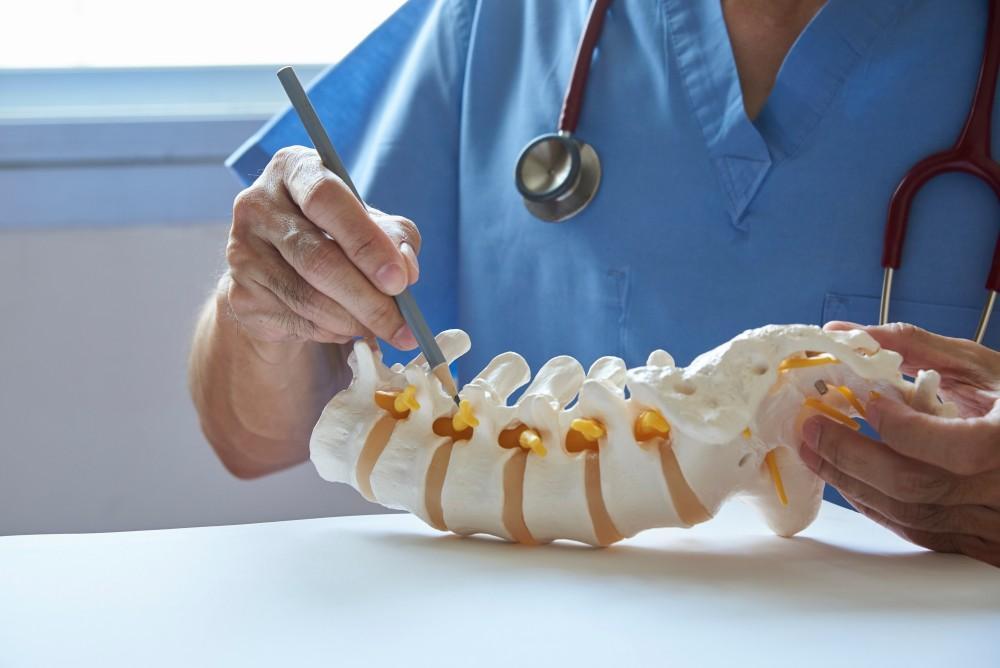
When Is it Time to Consider Artificial Disc Replacement Surgery?

Your spine endures a lot. It supports the weight of your head, allowing you to stand up straight. It allows you to bend forward, backward, and flex from side-to-side. And it protects the delicate spinal cord and nerve roots that run through the spinal canal. With so much going on, it’s no wonder that sometimes parts break down, causing pain and weakness.
Vertrae® board-certified neurosurgeon Dr. Kamal R. Woods and his team specialize in all manner of spine conditions, including those that deal with the intervertebral discs. When your spinal discs can no longer support your spine or, worse yet, actively cause pain, it’s time to consider disc replacement surgery. Here, the team discusses what’s involved in the process.
The long and short of your spine
The adult spine contains 24 bony vertebrae stacked one on top of the other from the base of the skull to the tailbone. The vertebrae are connected to each other through two pairs of facet joints, one set to the vertebra above and one set to the vertebra below.
Between each of the vertebral pairs lies an intervertebral disc, a cushioning structure that has a hard outer shell (annulus) and a soft, gel-like interior (nucleus). It’s the discs’ job to prevent the bones from grating against each other and to cushion the stress from movement.
Inside the vertebral column is a hollow space through which runs the spinal cord and nerve roots for peripheral nerves, those that exit the column to serve other areas of your body. If anything puts pressure on the nerve roots, the result is pain, weakness, and numbness that travels from the root along the length of the nerve. This condition is called radiculopathy. Sciatica, a compression of the sciatic nerve root between the L4-L5 and or L5-S1 vertebrae in the lower back, is a great example of this condition.
What can go wrong with the discs?
While you can certainly injure a disc, most disc problems occur from simple wear-and-tear over time. That can cause the annulus to crack open, allowing the nucleus to ooze out into the canal space where it puts pressure on the spinal nerve roots and causes pain. This condition is termed a herniated disc, and it’s a common cause of neck (cervical) and low back (lumbar) pain.
Another problem is degenerative disc disease (DDD), which isn’t really a disease but merely another breakdown of the disc structure over time. As you age, the discs can dehydrate, making them more rigid and flat. As the structure changes, the disc can put pressure on nerve roots, causing pain. But pain isn’t a given. While most people over 60 show degenerative changes in the discs, only a small percentage experience pain or other symptoms.
When is it time to consider artificial disc replacement surgery?
Here at Vertrae®, we always start with conservative treatment options, such as physical therapy, epidural steroid injections, bracing, traction, and even alternative therapies. If none serves to resolve your symptoms, Dr. Woods may consider a surgical option, in this case disc replacement.
Disc replacement surgery may be performed in the lumbar spine, and it’s an option that removes and replaces a worn-out or damaged disc that’s become painful and debilitating.
Artificial disc replacement is an alternative to spinal fusion surgery, a common operation for a symptomatic degenerative disc that prohibits movement at the affected joint to relieve pain. Fusion comes with its own set of problems, including improper healing (known as pseudarthrosis) and stress on the spinal levels above and below the fusion.
Artificial discs became FDA-approved in the early 2000s as a means of preventing the consequences of fusion surgery. If you have one or two painful degenerated disc for more than six months that hasn’t responded to conservative therapies, you may be a candidate for artificial disc surgery.
Artificial lumbar disc surgery has a number of goals:
- Remove the diseased disc
- Restore normal disc height
- Decrease disc-related back pain
- Preserve motion in the affected vertebral segment
- Improve patient function
Artificial disc technology comes with its own benefits, too, including a quicker recovery time, more spine mobility after surgery, less stress on adjacent discs, and no need for the bone graft that makes fusion possible.
The procedure does carry certain risks, such as dislodgement of the replacement disc, but Dr. Woods weighs all the pros and cons and discusses them with you before proceeding.
If you’re dealing with spinal problems that are causing you pain and weakness, it may be time to consider artificial disc replacement surgery. To learn more, or to schedule a consultation with Dr. Woods, call us at either location, or book online with us today.
You Might Also Enjoy...


4 Benefits of Outpatient Spine Surgery

Am I a Candidate for Kyphoplasty?

Pulled Muscle vs. Pinched Nerve: What's the Difference?

4 Subtle Signs of Sciatica

